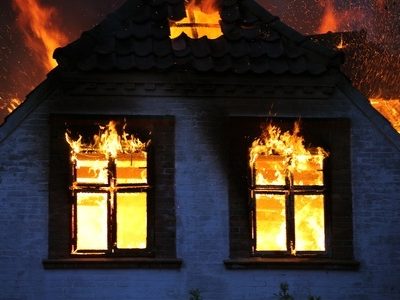

Avoiding Classroom Accidents
Parents of school aged children have “back to school” on their minds. There will be adjustments as children meet a new teacher and get back into the routine of daily lessons. Principles, school district employees, and teachers will also be thinking about how to avoid classroom accidents. The best ways to avoid classroom accidents are to create a safe environment, supervise appropriately, and teach safety skills. Removing potential hazards from the classroom environment ranks as the most critical factor in avoiding classroom accidents; a safe environment also frees the teacher to focus on teaching and bonding with the children.
How to Create a Safe Classroom Environment to Prevent Classroom Accidents
Entrances and Exits
- All steps and entrance ramps should have sturdy handrails with a bar each for adults and children.
- Doors should remain unlocked during open hours.
- Hallways should be well lit and free of excessive clutter.
Windows
- Low windows are a safety hazard. Create a barrier in front of them by securing plastic safety gate panels to the walls to form a “fence” in front of the windows.
- Alternately, you can keep windows locked or attach window guards that limit the distance a window may open. To prevent head entrapment, windows should not open more than 3 1/2″.
Floors
- Floors and floor coverings should be clean and kept free of debris or tripping hazards. Check for small, sharp objects such as nails, pins, and staples that may not be easily visible.
- Use carpet tape or rubber backing to prevent rugs from curling or slipping.
- Inspect corners and under furniture for paperclips, toys, and other small items.
Walls
- Inspect walls, wall coverings, bulletin boards, and heat sources, and pictures for potential hazards.
- All electrical outlets should be securely covered when not in use.
- Pictures and wall decorations should be laminated or framed in lightweight plastic frames and securely fastened to the walls.
- Keep flammable items well away from heat sources.
- Bulletin boards should be securely fastened to walls with screws or other hardware installed into the wall studs.
Ceilings
- If your classroom has removable ceiling tiles, check to be sure all are securely in place.
- Check for signs of leaks and notify maintenance.
- Light fixtures should be properly wired and well secured to the ceiling.
- Smoke detectors should be tested monthly.
- Only hang very lightweight items from the ceiling such as paper artwork.
Furniture
- Check furniture for loose or protruding screws, nails, hinges, latches, or broken hardware.
- Furniture should have rounded edges and corners and be painted with non-lead based paint.
- Sand surfaces that are rough or splintered and repair cracks.
- Check doors, legs, joints, and other parts to ensure they are screwed in tightly and are stable.
- Shelves, dressers, and storage cabinets should be securely bolted to walls so they will not fall, even if a child tries to climb it.
- Furniture such as bookshelves should be short and have wide bases to help prevent toppling. Keep heavy items on the bottom shelf.
- Install child stoppers on drawers and cupboards but know that older children can easily open them.
- Electrical appliances should be anchored to the shelf or table with the cord well out of reach.
Toys and Supplies
- Check toys for rough or sharp edges and chipping paint.
- If broken toys can’t be repaired then throw them away.
- Keep toys with small parts out of classrooms with small children.
Poison Prevention
- Check with the nursery to make sure any classroom plants are not poisonous.
- All art supplies should be labeled as non-toxic.
- Store chemical and cleaning solutions and medicines out of reach in locked cabinets.
Storage Closets
- Storage closets, garages, workshops, should be kept locked at all times.
Bathrooms
- If possible, bathrooms should have child-sized fixtures or at the least, sturdy stools to reach fixtures.
- The hot water temperature should not exceed 120 degrees Fahrenheit.
- Clean up water spills immediately.
- Keep cleaners locked up and avoid using toilet bowl cleaner, which can be deadly to children.
Kitchens
- If there is a kitchen in your classroom facility keep knives locked away from children’s reach.
- Keep appliance electrical cords out of reach.
- Keep cleaners locked and out of reach.
It is a school’s responsibility to keep children safe and that means keeping classrooms free of hazards, good adult supervision, and teaching children about safety.
If you or a loved one were injured in an accident, you have enough to deal with. Let an experienced accident attorney fight for the full compensation that you deserve. It is not uncommon to receive a settlement from the insurance company that is five to ten times bigger with the help of a lawyer. Call the caring accident attorneys at Tario & Associates, P.S. in Bellingham, WA today for a FREE consultation! We have been representing residents of Whatcom County, Skagit County, Island County and Snohomish County since 1979. You will pay nothing up front and no attorney fees at all unless we recover damages for you!




